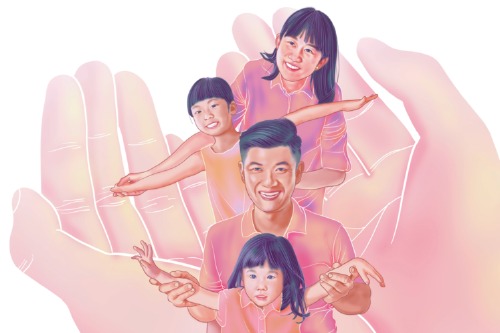Poverty elimination contributes to global development


China eradicated extreme poverty in 2020, a giant achievement given that the annual economic growth of the country last year was only 2.3 percent. This fact is important not only for China but for the whole world, because for the past decade and a half, China has been the prime driver of global economic growth.
This year, China's economy is expected to grow by more than 6 percent. What does that mean for Latin America?
China is the second main export market for Latin American countries and a growing one at that. It is already the main market for big countries in South America, such as Brazil, Argentina, Chile and Peru. And the COVID-19 pandemic is expected to increase the importance of the Chinese market for the region, not least because it is expected to grow at one of the fastest rates in the world.
Also, Chinese investment in Latin America, which has been growing, is expected to further increase. Latin America needs investment in many sectors, especially in the infrastructure sector. No wonder 19 countries in the region have already joined the Belt and Road Initiative, the last one being Peru in April 2019. And China's growing investment in Peru has made it one of the main investors in the country-about $30 billion at the end of 2020 (about one-fourth of the total foreign investment in Peru).
Besides, China, with per capita income of more than $10,000, is aiming to basically realize "socialist modernization" by 2035. For that, however, China has to avoid the middle-income trap.
How can China achieve the 2035 goal after realizing its 2020 goal of eradicating extreme poverty?
First, China needs to improve the well-being of rural residents, for which it must boost agricultural productivity in order to increase farmers' incomes. But that is a very challenging task, because as productivity increases, fewer workers will be needed for agricultural jobs. Therefore, the central authorities should allow the free mobility of rural residents, albeit with certain restrictions, by adjusting the hukou (household registration) system so they can get better-paying jobs in cities.
Second, the government should take steps to improve rural residents' education level and provide them with training to help them get better-paying jobs. As China's economic structure shifts from the primary sector (for example, agriculture and mining) to the manufacturing sector, especially high-end manufacturing and service sectors, people need to acquire new, advanced skills to enter such fields, including advanced technology.
In fact, the service sector already accounts for more than 50 percent of China's GDP. But there are many disparities in service sector jobs-high- and low-playing jobs for example. Banking, IT and education sectors, for instance, offer relatively high-paying jobs.
Third, in the manufacturing and service sectors, China must move from producing low-value-added goods and services to higher value-added goods and services, so as to enable workers to earn higher wages. China is developing advanced technologies at a fast pace, among other things, by allocating more funds for research and development. It has come a long way in this field and has already become a leader in sectors such as 5G technology, high-speed rail, and electric cars. Its "Made in China 2025" plan is playing an important role in this context.
And fourth, China should further open up its economy to the outside world so that its manufacturing and service sectors become more competitive in high value-added industries. As China's middle-income group grows and acquires more purchasing power, it will be able to afford and demand more foreign goods and services with higher added value. Actually, China has become the world's largest consumer market and is therefore contributing more to the global economy.
In summary, to avoid the middle-income trap, China needs to produce more and more higher value-added goods and services. It will also need to implement policies to improve social safety nets, give people equal access to good education and health services, build more affordable housing, and guarantee retirees decent pension.
What lessons can China offer other countries, and how can China and other countries help each other to boost mutual development? Probably, the main lessons are developing the agriculture sector, helping farmers raise their incomes by improving productivity, and strengthening the manufacturing sector so it can employ more and more people, provide good education which a country needs to move from producing low value-added goods to higher value-added ones.
Moreover, China can help other developing countries modernize their agriculture and industrial sectors, as well as infrastructure facilities, and expand its market to buy more products from those countries.
The views don't necessarily represent those of China Daily.
The author is a professor of economics at the National University of San Marcos in Lima, Peru.
If you have a specific expertise and would like to contribute to China Daily, please contact us at opinion@chinadaily.com.cn, and comment@chinadaily.com.cn.


































